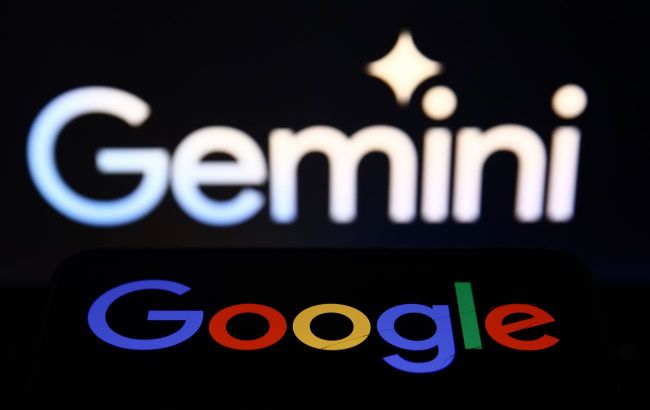How to create AI bots in Google Gemini: Step-by-step instructions
 How to customize AI bots in Google Gemini for your own needs (photo: Getty Images)
How to customize AI bots in Google Gemini for your own needs (photo: Getty Images)
In the digital age, the creation of AI bots has become an important tool for automating processes and improving user experience. Google Gemini provides opportunities to create such bots that can perform various tasks, reports Lifehacker.
Create new chatbots
You can access your Gemini Gems from any device where you're signed in to Google, but to create new Gem you need to use the Gemini web app.
To get started, click on the Gem Manager link on the left (if the sidebar is hidden, click on the three lines in the upper left corner): you will be shown several ready-made Gem that are already available for use.
They cover topics such as programming, writing, and career advice, and give you an idea of what Gemini Gems can do. Click on any of these Gems to test them (you'll also see a gallery of suggested queries), or click the copy button (two rectangles) to duplicate the Gem and edit it yourself.
When you choose to copy a completed Gem, the information used to create it will appear on the screen: you can click anywhere to make changes to the instructions already there and give the Gem a new name. You can even get Gemini to help you write instructions by using the pen-shaped button with an asterisk next to it.
Creating your own Gem is similar to editing an existing one. On the Gem manager screen, click New Gem. You will then give your Gem a name and instructions. These can relate to the topics Gem should focus on, the type of language and tone it should use, and what it should definitely not do (e.g., go off topic).
In the Knowledge field, you can upload your own documents: for example, if your Gem is a DNA expert, you can upload scientific articles on this topic. This also allows you to create custom Gem based on any interests or topics, if you have sources for the AI to draw on.
Any documents you add will work on top of your existing Gemini training, and you can test your Gem using the input box on the right, making further adjustments as needed. When you are satisfied with the way your Gem executes commands and responds to your requests, click Save.


Creating a new chatbot (photo: Lifehacker)
Communicating with your chatbots
Any Gem you create can be called up as needed through the manager in the left pane of the web interface, and they will also be available in the Gemini mobile apps - just make sure you select the right Gem before you start chatting.
Everything works the same way as with the main Gemini AI: you enter your queries by typing or speaking (via the microphone button), and get answers on the screen.
As usual, you can rate the quality of the answers using the thumbs up and thumbs down buttons, ask Gemini to try again (the circular arrow button), and see the sources used by the chatbot below the answer.
If Gemini uses the documents you uploaded, it will be displayed at the top of the answer: click "Analysis complete" to see a detailed breakdown. You can also specify that your Gem should refer to specific documents for specific answers to your queries if needed.
The ability to upload documents is what really makes Gems useful. For example, you can upload an essay about your favorite music and movies and create a Gem to recommend them - all this information will be saved and you don't have to enter it every time you use Gemini.
You can also upload examples of your own writing to get your Gem to write in your style.
These customized AI bots are also useful when you need to get answers in the same format or style: for example, you may only need a playlist generator and nothing else, or you may want to rewrite text in a certain style. Gems can do this without you having to repeat the same query commands every time.
You can use the "+" button at the bottom of Gem chats to upload files and images to use in your queries, just as you would in any Gemini chat. However, you don't have access to the more natural voice interface of Gemini Live inside Gems - only the basic voice interaction mode is available, as well as the text input option.


Communicating with your chatbots (photo: Lifehacker)

